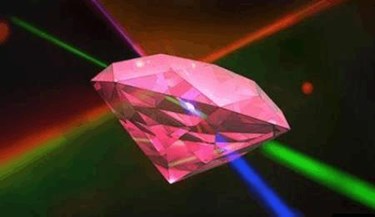Scientists Fabricate Silicon-Doped Diamonds For Scalable Quantum Computers
By Jof Enriquez,
Follow me on Twitter @jofenriq

A team of researchers from MIT, Harvard University, and Sandia National Laboratories has devised a new technique to create and position silicon qubits in diamonds to within 50 nanometers of their optimal locations, making it more feasible than ever before to mass produce quantum computers.
Inherent defects, impurities, or "vacancy centers" in the crystal structure of a diamond contain trapped electrons whose spins constitute quantum bits (qubits), which store information in a quantum system. Other scientists have used nitrogen-vacancy centers, which can maintain the superposition of qubits long enough to adequately transfer information between quantum devices. These centers, however, emit light in a relatively broad spectrum of frequencies, which could lead to inaccurate data.
With their counterparts from Harvard and Sandia, the MIT researchers used silicon-vacancy centers, instead, which emit light in a very narrow band of frequencies, and are therefore more accurate. Theoretically, silicon-vacancy centers will extend superposition if cooled down to fractions of a degree above absolute zero.
In order to be able to amplify the signal emitted from silicon-vacancy centers, though, the researchers knew they had to create defects as close as possible to their ideal locations. Through a process called targeted ion implantation, they injected silicon ions into each of the optical cavities in the diamond. They were able to produce silicon-vacancy centers within about 50 nanometers of their optimal positions at the edge of the cavity, and enhanced the emitted light to as much as 85 to 90 percent from ideal brightness.
“The dream scenario in quantum information processing is to make an optical circuit to shuttle photonic qubits and then position a quantum memory wherever you need it,” says Dirk Englund, an associate professor of electrical engineering and computer science who led the MIT team, in a press release. “We’re almost there with this. These emitters are almost perfect.”
Creating diamond defects through this new technique is simpler and more precise than current fabrication methods to build diamond-based quantum computers.
“50-nanometer precision is certainly better than not controlling position at all, which is what we are normally doing in these experiments, where we start with randomly positioned emitters and then make resonators,” said Jelena Vuckovic, a professor of electrical engineering at Stanford University.
The study was published in the May 26 online edition of Nature Communications, where the researchers claim that their novel method for the targeted generation of nearly transform-limited quantum emitters should facilitate the development of scalable solid-state quantum information processors.
